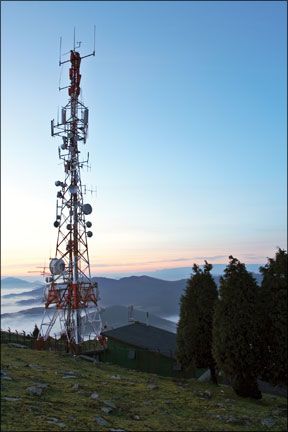I wanted to write in response to the recent Learning Experience entry
Despite my best efforts, the flight ended well thanks to Buffalo approach. They took me up and over the tops all the way to UCA where I made a simple, safe

288
approach. The ceiling there was at minimums but it was the smoothest air Ive ever flown in, and some of the safest.
The writer mentioned hills, but no reference to antennas as he flew. Hills in general are favored by radio stations and cell phone companies, and most often harbor a danger I learned to call “Porcupine Ridge.” Every radio station wants to be there.
Years ago I was closing on my destination of Odessa, Texas, while still above an overcast. I came across a truly beautiful hole in the clouds below me and spiraled down through it. Thats when I caught sight of something out the corner of my eye. It was terrifying. An antenna, then another and a half dozen more. I maneuvered to safety and got over the highway to Odessa.
I mentioned this to the line boy as I had him top my tanks. He laughed at me. “Oh, that,” he said in his silky Texas accent. “We call it Porcupine Ridge.”
Jim Platler
Via e-mail
Weve written about scud running before, generally concluding it has its place as long as pilots know and accept the increased risk while establishing certain additional rules (current visual charts, good visibility and constant situational awareness, among others). Theres no question cell-tower proliferation has made the practice more challenging.
ATC Bags Another One
Referencing the January 2008 issue and the Accident Briefs item involving a King Air that crashed shortly after takeoff from Chino, Calif., as the nose wheel lifted off the runway, the tower directed the pilot to switch to departure frequency.
The aircraft settled onto its right wing, since the pilot had to reach to the right to change frequencies. The results? One destroyed King Air and two fatalities.
What is needed is a ban on ATC requirements beginning after “cleared for takeoff” until reaching 5000 feet agl. Changing frequencies when low and slow kills one pilot per month.
Are we really willing to pay this price to satisfy the arbitrary requirements of ATC ? Thanks.
Hal Stiles
Via e-mail
Its always the pilots responsibility to fly the airplane, including outright ignoring ATC calls at inopportune times. Opportune ones, sometimes.
Can You Hear Me Now?

288
Regarding the article (“Hear Here,” December) on headsets: I agree with your conclusions. The concern I have is your statement the Bose Headset X was declared the best-performing ANR headset. What about the new LightSPEED Zulu headset?
But, I dont think its a fair comparison when you do not compare the best that all companies have. Not only that, if you do not show us the statistics so we can see what the differences are, we cannot tell if it is enough difference to even matter. Then and only then can a person decide if the extra money you might pay over another one is worth it, and it then is fair to all companies.
I have no connection with LightSPEED or any other headset company, but I feel it is wrong for you to say something is the best without proof.
Stan Dammel
Odessa, Wash.
The photo caption to which youre referring also mentioned we didnt do the testing; sister publication
Aviation Consumer did, in its May 2007 issue. All the details of what and how it tested headsets are in that article. The new LightSPEED Zulu wasnt available when the testing was performed.



